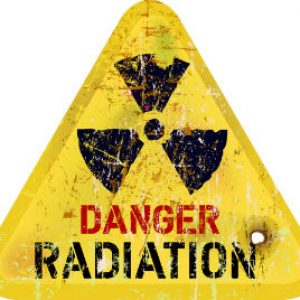
Disease can be defined as an abnormal function in the body that has specific symptoms. These symptoms are not due to physical injury. Disease does share a link with hair loss. Some examples of diseases that can affect hair include autoimmune diseases, thyroid diseases, and fungal infections. (1,2) Hair loss can also occur due to disease treatment, such as radiation and chemical therapy. (3)
Autoimmune disease occurs when your immune systems starts to attack healthy cells. An example of an autoimmune disease that is hair related is alopecia areata, as discussed in previous blog posts. In this condition, the body starts to produce antibodies that create damage to hair follicles creating bald patches. (1,2)
Thyroid diseases such as hypothyroidism and hyperthyroidism have also been linked to hair loss. (4,5) As I’m sure you have guessed, hypothyroidism is the low activity of the thyroid gland and hyperthyroidism is over activity of the thyroid gland. (4,5) In a sample of 78 patients with alopecia areata, 24% were found to have a thyroid abnormality. (5)
Radiation and chemical therapy (chemotherapy for example) are used to treat diseases and can lead to hair loss. Hair is damaged because hair growth is stopped and programmed cell death is triggered. (3) Medication including over the counter drugs and prescriptions can also lead to hair loss. (6,7)
Fungal infections (tinea capitis for example) can also lead to hair loss. Tinea capitis rarely affects adults but can infect the hair shaft resulting in a chronic infection. (9) Hair follicles can also be infected and can result in hair loss. (9)
Talk to your doctor if you have any of these diseases and are noticing hair loss. With your doctor’s help you can start addressing this symptom in a safe and effective manner.
Article by: Sarah Versteeg MSc, Mediprobe Research Inc.
- Santos Z, Avci P, Hamblin MR. Drug discovery for alopecia: gone today, hair tomorrow. Expert Opin Drug Discov. 2015 Mar;10(3):269–92.
- McElwee KJ, Boggess D, Olivry T, Oliver RF, Whiting D, Tobin DJ, et al. Comparison of alopecia areata in human and nonhuman mammalian species. Pathobiol J Immunopathol Mol Cell Biol. 1998;66(2):90–107.
- Giaccia AJ, Kastan MB. The complexity of p53 modulation: emerging patterns from divergent signals. Genes Dev. 1998 Oct 1;12(19):2973–83.
- Dave P, Bhosle D, Dharme M, Deshmukh D, Patel J. Autoimmune Polyglandular Syndrome Type 2 with Alopecia Universalis and Hypoparathyroidism. J Assoc Physicians India. 2015 Apr;63(4):74–6.
- Lyakhovitsky A, Shemer A, Amichai B. Increased prevalence of thyroid disorders in patients with new onset alopecia areata. Australas J Dermatol. 2014 Oct 10;
- Hull PR, Demkiw-Bartel C. Isotretinoin use in acne: prospective evaluation of adverse events. J Cutan Med Surg. 2000 Apr;4(2):66–70.
- Pillans PI, Woods DJ. Drug-associated alopecia. Int J Dermatol. 1995 Mar;34(3):149–58.
- del Boz J, Crespo V, Rivas-Ruiz F, de Troya M. A 30-year survey of paediatric tinea capitis in southern Spain. J Eur Acad Dermatol Venereol JEADV. 2011 Feb;25(2):170–4.
- Khosravi AR, Shokri H, Vahedi G. Factors in Etiology and Predisposition of Adult Tinea Capitis and Review of Published Literature. Mycopathologia. 2016 Mar 23;












